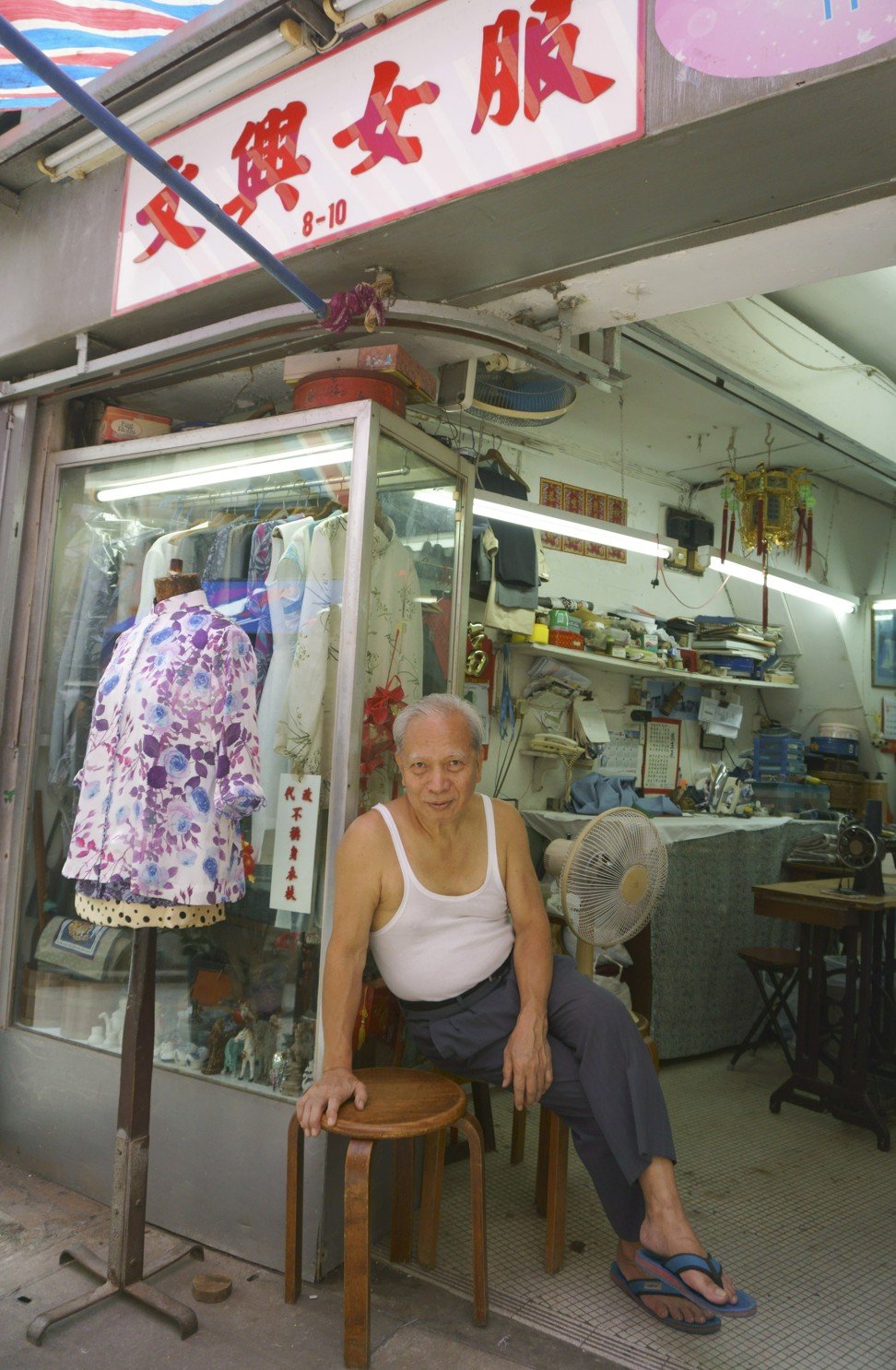
Hong Kong’s tiny understairs shops: the Elgin Street tailor who treasures his craft and a sense of community
In the second of a series of portraits of the people still working in tiny spaces under the city’s staircases, we meet a cheongsam maker carving out a humble living surrounded by the swanky restaurants and bars of SoHo
For the past three decades, Yeung Fook’s daily routine has been the same: go to Ka Ho Restaurant on Queen’s Road Central for breakfast, then walk to his tiny shop nearby and start making cheongsam – Chinese style dresses also known as qipao – for his clients.
Yeung, 72, is the owner of Man Hing Tailor, an “understairs shop” on Elgin Street in Central. Surrounded by the swanky restaurants and expensive bars of the SoHo upscale dining area, the shop is an unlikely find.
Why Yau Ma Tei estate was a turning point for Hong Kong housing
This area was once called “Mud Street” by the locals because it got so muddy in the rain. Some traces remain of what things used to be like here – apart from Yeung’s shop, a smattering of small antique stalls and a dai pai dong stand at the end of the street.

Yeung says the entire street used to be filled with fresh fruit and vegetable stalls. The shop opposite him was a printing company before it was replaced by a Middle Eastern restaurant. Next to it, a luxury Japanese restaurant serves up HK$700 set lunches to executives – a stark contrast to Yeung’s humble shop just a few feet away.

Cheongsam making is a dwindling craft in the city. “After ready-made fashion became more prominent, fewer and fewer people came to us for handmade clothing,” says Yeung, who has been a tailor for 50 years. He moved to Hong Kong from Macau when he was 14 and started an apprenticeship with one of his cousins on Wellington Street. He moved to other tailors in the area and finally settled on Elgin Street about 30 years ago.
“It takes a few days to finish a dress. I am slower, though, now that I am older,” says Yeung, putting on his glasses and starting to work on his old sewing machine.

Most of his tools – from the sewing machine to his ruler and scissors – have been with him for five decades. Some of the items are not made any more, like a tiny water spray that is now just a feature incorporated into an iron.

He and his tools might be old, but Yeung counts a few younger people among his clientele.
“[Master] Yeung is very humble about his craft,” says Jolita Sun, a loyal customer in her 30s. “All his dresses are very comfortable.” She found out about Yeung’s shop from an exhibition about cheongsam and now owns more than a dozen of his dresses. She considers Yeung a friend and stops by every now and then for a chat.

Man Hing Tailor is also a hub for elderly people living nearby – a hidden community that most Soho visitors rush past, unaware.
Mrs Chan, who is in her 80s, stops by Yeung’s shop for a chat every day on her way back from the wet market.
“Guess how long I have known Mrs Chan? Forty years,” says Yeung as another friend walks in.
Nearly every day at 1pm, a mahjong table is set up next to the sewing machines and Yeung’s friends join in for a game that lasts all afternoon. Those who don’t play sit on a few stools set up in the shop and chat.
Meet the people from Hong Kong’s understairs shops: the locksmith
Man Hing Tailor may be surrounded by modern developments, but its owner has protected a noble old craft, and perhaps more importantly, a sense of community.
